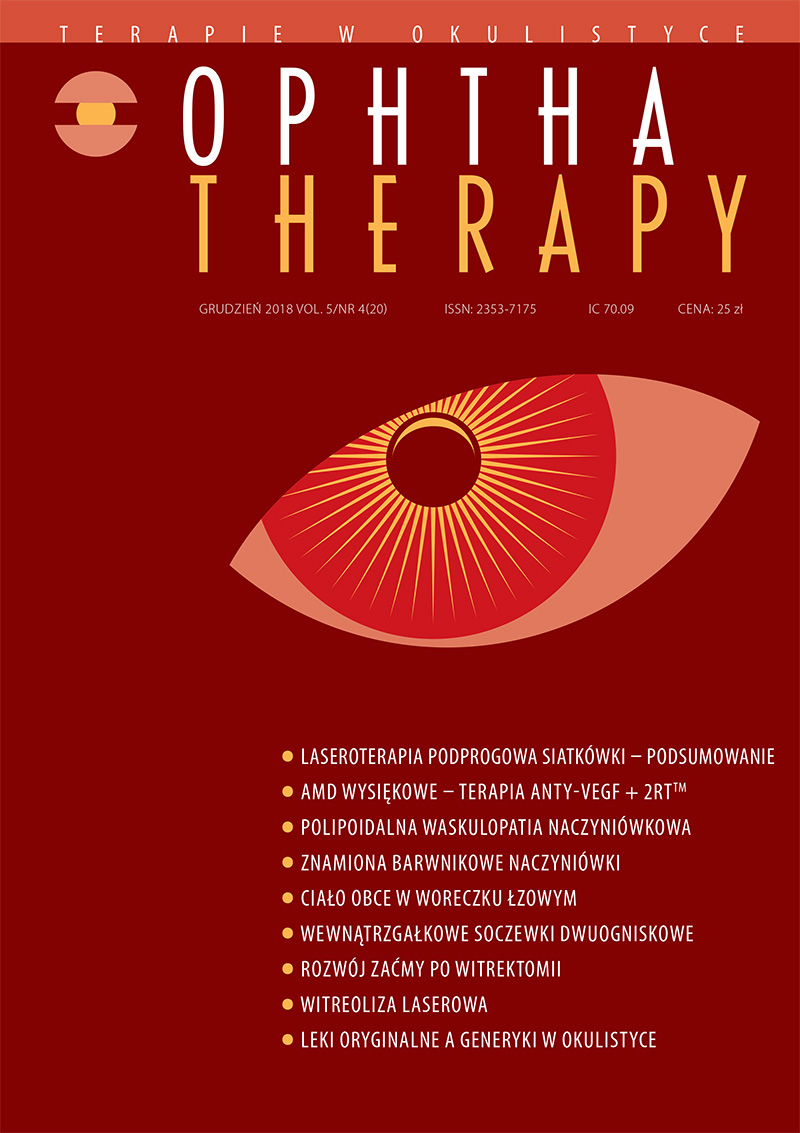How new generation lasers are different from each other?
Main Article Content
Abstract
Laser has changed a lot over the years, the newer laser can deliver energy in different ways, by reducing the duration to 10–20 ms, in a train of pulses of 0.1 ms as in the micropulse / subliminal laser, and extremely short duration of 0.0017 ms as in the nanosecond laser. Clinical studies have shown that micropulse laser is efficacious in multiple macular conditions. Reducing the power and duration using end-point management has yet to demonstrate clinical efficacy beyond CSR. The ability to reduce the progression of intermediate AMD is intriguing, after all the LEAD (Laser intervention in early stages age-related macular degeneration) trial failed the primary endpoint. Nonetheless, there is evidence to support that it may be effective in a highly selected sub-group of intermediate AMD patients. More studies are required to see whether other lasers such as micropulse laser can have the same effect, and whether micropulse lasers with a slightly higher energy leading to a few RPE cell deaths is needed to have the same effect.
Downloads
Article Details

This work is licensed under a Creative Commons Attribution-NonCommercial-NoDerivatives 4.0 International License.
Copyright: © Medical Education sp. z o.o. License allowing third parties to copy and redistribute the material in any medium or format and to remix, transform, and build upon the material, provided the original work is properly cited and states its license.
Address reprint requests to: Medical Education, Marcin Kuźma (marcin.kuzma@mededu.pl)
References
2. Bandello F, Polito A, Del Borrello M et al. "Light" versus "classic" laser treatment for clinically significant diabetic macular oedema. Br J Ophthalmol. 2005; 89(7): 864-70.
3. Lavinsky D, Wang J, Huie P et al. Nondamaging Retinal Laser Therapy: Rationale and Applications to the Macula. Invest Ophthalmol Vis Sci. 2016; 57(6): 2488-500.
4. Lavinsky D, Palanker D. Nondamaging photothermal therapy for the retina: initial clinical experience with chronic central serous retinopathy. Retina. 2015; 35(2): 213-22.
5. Inagaki K, Ohkoshi K, Ohde S. Spectral-domain optical coherence tomography imaging of retinal changes after conventional multicolor laser, subthreshold micropulse diode laser, or pattern scanning laser therapy in Japanese with macular edema. Retina. 2012; 32(8): 1592-600.
6. Sivaprasad S, Elagouz M, McHugh D et al. Micropulsed diode laser therapy: evolution and clinical applications. Surv Ophthalmol. 2010; 55(6): 516-30.
7. Scholz P, Altay L, Fauser S. A Review of Subthreshold Micropulse Laser for Treatment of Macular Disorders. Adv Ther. 2017; 34(7): 1528-55.
8. Vujosevic S, Martini F, Longhin E et al. SUBTHRESHOLD MICROPULSE YELLOW LASER VERSUS SUBTHRESHOLD MICROPULSE INFRARED LASER IN CENTER-INVOLVING DIABETIC MACULAR EDEMA: Morphologic and Functional Safety. Retina. 2015; 35(8): 1594-603.
9. Guymer RH, Wu Z, Hodgson LAB et al. Laser Intervention in Early Stages of Age-Related Macular Degeneration Study Group. Subthreshold Nanosecond Laser Intervention in Age-Related Macular Degeneration: The LEAD Randomized Controlled Clinical Trial. Ophthalmology. 2018 Sep 20 epub ahead of print.
10. Vessey KA, Ho T, Jobling AI et al. Nanosecond Laser Treatment for Age-Related Macular Degeneration Does Not Induce Focal Vision Loss or New Vessel Growth in the Retina. Invest Ophthalmol Vis Sci. 2018; 59(2): 731-45.

